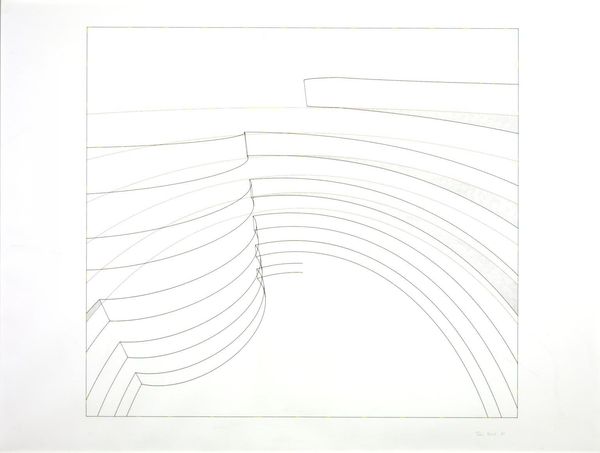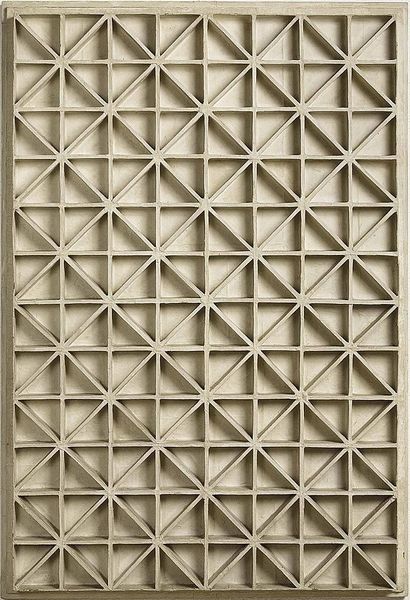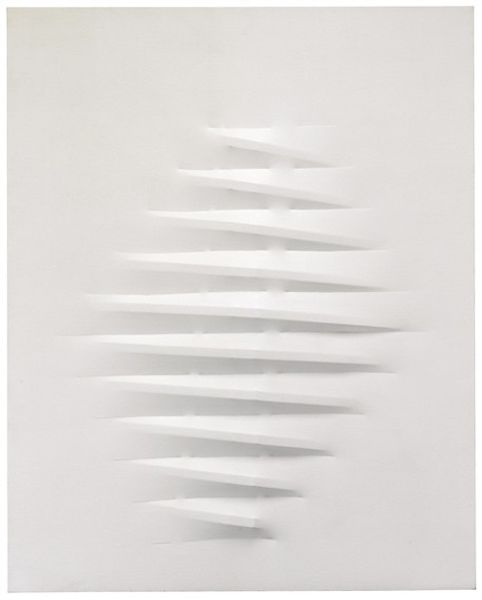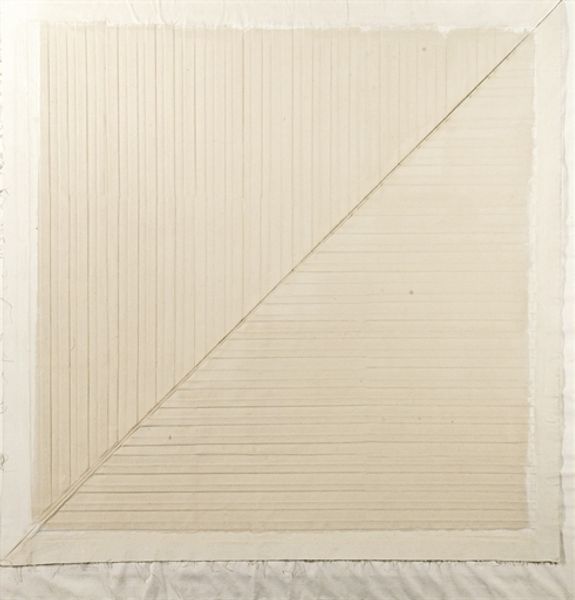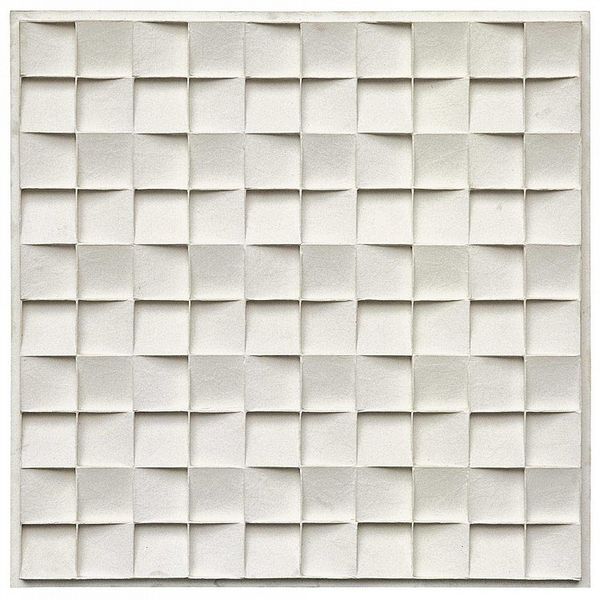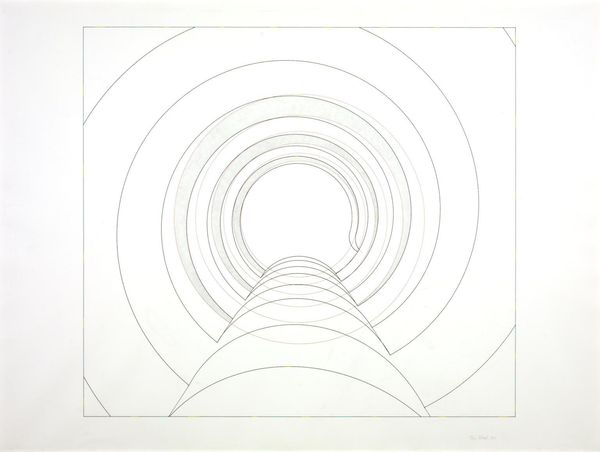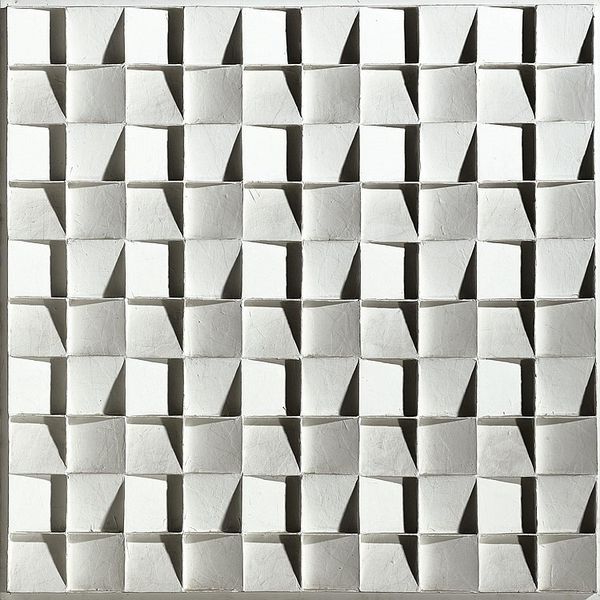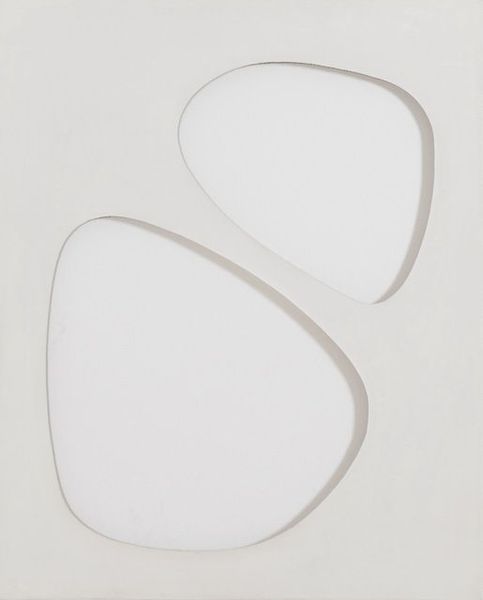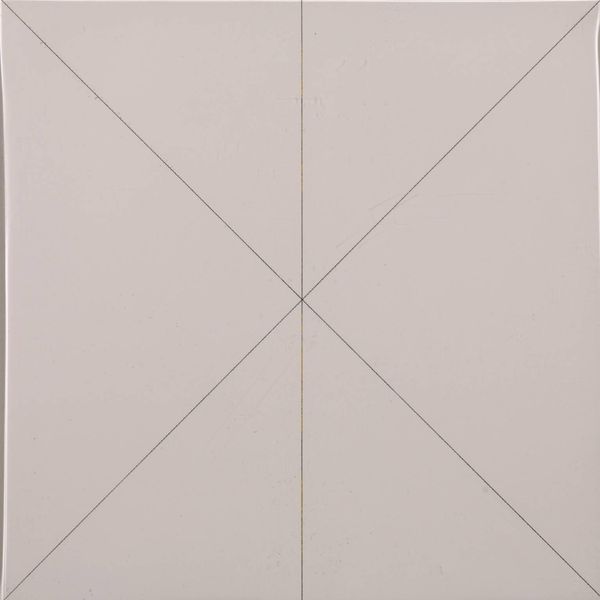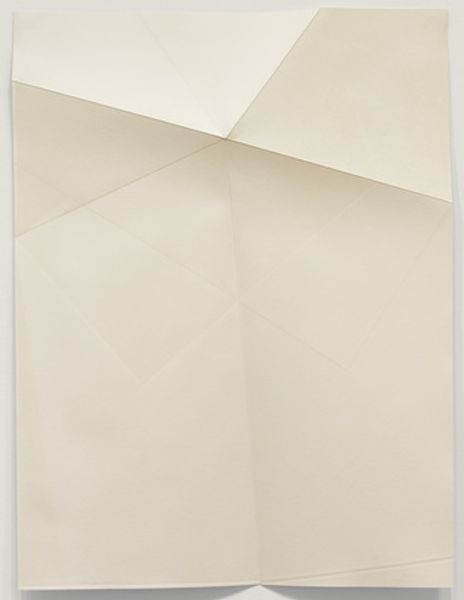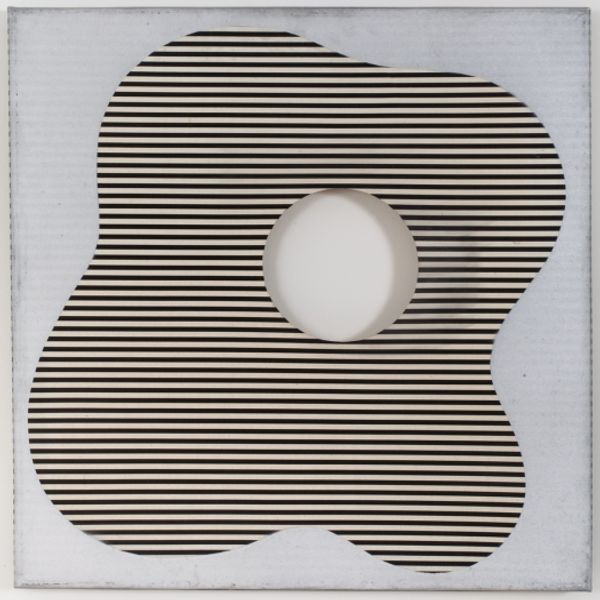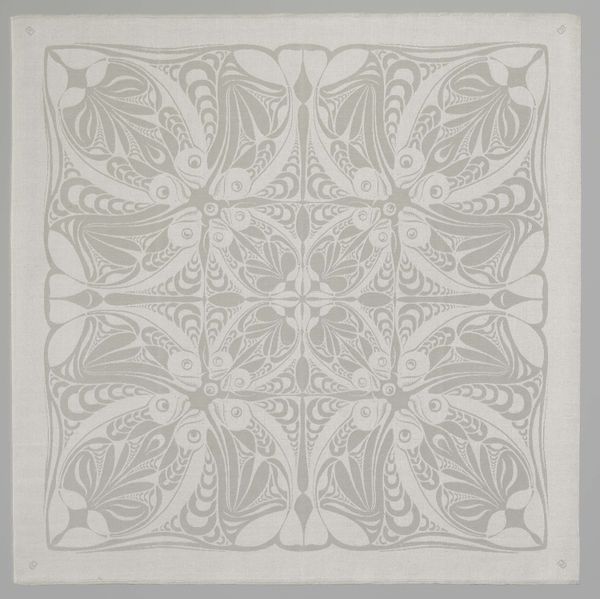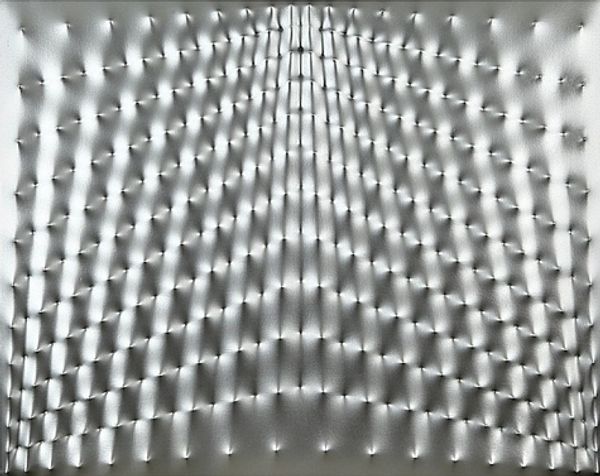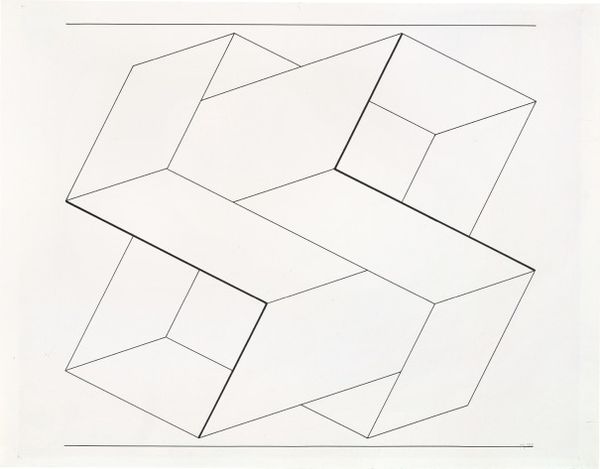
relief, serial-art
#
conceptual-art
#
minimalism
#
relief
#
serial-art
#
geometric
#
abstraction
#
line
Copyright: Johannes Jan Schoonhoven,Fair Use
Curator: Standing before us is "RAD 4," a relief work created by Johannes Jan Schoonhoven in 1968. Editor: My immediate impression is one of austere serenity, like a frozen clock. The subtle gradations of shadow across the white surface create a remarkably dynamic interplay. Curator: Schoonhoven was deeply engaged with the Zero movement, seeking to strip away subjectivity and traditional artistic expression in favor of geometric abstraction and seriality. Editor: Precisely. The work’s geometric composition and almost clinical execution prompt viewers to consider shape, shadow, and form devoid of overt symbolism. It emphasizes materiality and the interplay of light with surface texture above all else. Curator: Indeed. "RAD 4" is a significant work because it mirrors post-war society’s fascination with technology and its detachment from conventional methods of thinking about art. There is also the important context of Schoonhoven questioning the role of art institutions in the work, moving away from painting to geometric designs that felt at the time like they would not become as easily fetishized by the market. Editor: The repetitive radial design is both visually captivating and conceptually rigorous. The ridges catch and refract light, constantly altering the object's appearance depending on the angle and intensity. You get something different each time you see it. Curator: And its existence challenges our accepted concepts of art, mirroring a social transition to rationality, where even an art piece serves a calculated purpose rather than solely aesthetic intent. Editor: I appreciate the sheer visual discipline it reflects. There is the semiotic potential too. While its essence might appear to avoid deep symbolism, a visual vocabulary appears: lines radiating outward may communicate openness. Its circular nature communicates unity and cycles of time, all with quiet precision. Curator: Looking back, it is interesting to see how its creation defied market and institutional expectations, yet it eventually found acceptance and became something that does carry its own social capital, doesn't it? Editor: Absolutely. Now that I've thought about this a little, I have even more regard for the optical qualities inherent in the work itself and how it can move the spectator with simplicity.
Comments
No comments
Be the first to comment and join the conversation on the ultimate creative platform.
